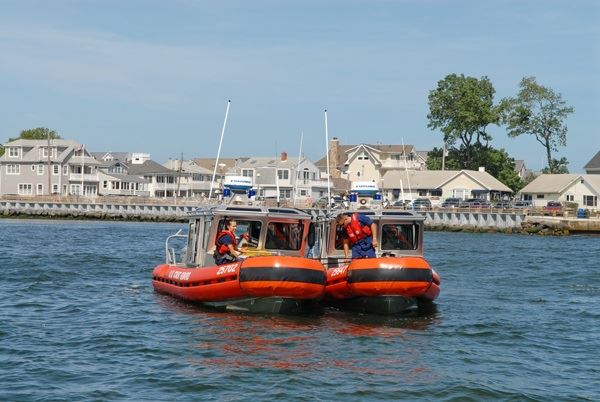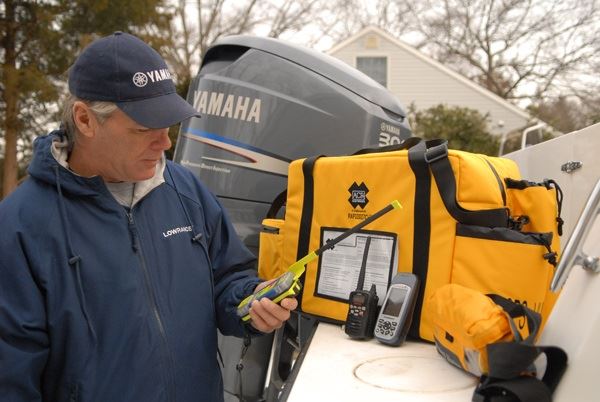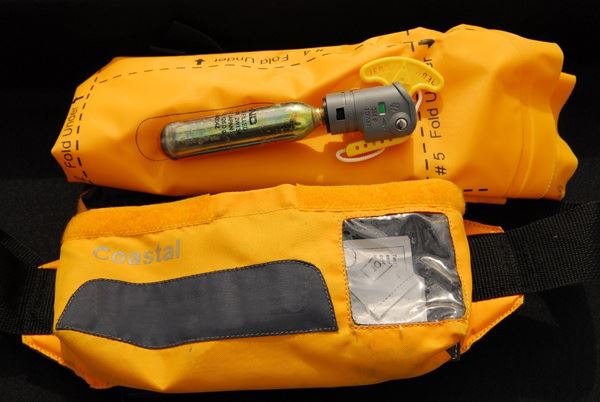
It was a hot Saturday afternoon in July, and the river was busy with boats of all sizes. While cruising by, a familiar orange vessel appeared off our starboard side with its blue revolving light shining brightly. It was a Coast Guard RIB, short for rigid inflatable boat, and a guardsman was standing on the bow motioning to our boat.
“Good afternoon, captain,” he said. “We would like to conduct a safety inspection of your vessel. May we board, please?”
Coast Guard inspections of this type are mandatory, so the question was a courtesy. A boater can either be pleasant or confrontational, but there is never a good reason for not complying. This is especially true when you think about the difficult job these hard-working men and women undertake, and that they put their lives on the line when called on to make hazardous rescues.
So my appropriate response was a pleasant greeting and a simple welcome aboard. The coxswain, the guardsman at the helm of the RIB, brought the boat alongside and two others, wearing dark blue uniforms and bright orange PFDs, stepped aboard.
 The boarding officer announced his intention: to identify the vessel, the owner and the operator, check the paperwork and conduct an inspection to be sure it had all the safety equipment required by federal regulation for that classification of recreational vessel.
The boarding officer announced his intention: to identify the vessel, the owner and the operator, check the paperwork and conduct an inspection to be sure it had all the safety equipment required by federal regulation for that classification of recreational vessel.
“You may continue through the bridge,” the officer said, “and proceed to your destination while we conduct the inspection so we don’t slow your progress.”
He told us that the crew in the RIB would follow along and pick them up when the inspection was finished. He then asked for our vessel registration, which is mandatory, and the operator’s driver’s license, social security number and date of birth, which is voluntary. Since we were in a state that requires a vessel operator to have a safe boating course certification, that certificate was also provided with the other documents. The documents were passed from the boarding officer to the other guardsman, who entered the data into a hand-held electronic touch-pad device with a built-in printer.
The next step was a check of the mandatory safety equipment onboard. Since we were wearing inflatable PFDs at the time, they were checked to assure both were Coast Guard-approved and properly armed. An approved PFD is required for every person onboard a recreational vessel, so we keep four additional Type III units stored at all times. A throwable flotation device is also required, which can consist of an approved life ring or a flotation cushion. That was also checked to be sure it was in good condition.

During the inspection, an interesting discussion with the boarding officer ensued about the whole procedure. He explained that it was the Coast Guard’s policy to do safety inspections as a method of outreach to the boating public to impress upon them the importance of carrying the necessary safety equipment in case of an emergency.
Next, he asked to see and test our audible signaling device, a horn, which can be an electric horn mounted on the vessel or a hand-held device powered by a compressed air canister.
When the inspection was complete, the boarding officer gave the vessel a once-over, complimented us on the fact that our safety equipment went above and beyond regulations, noted the vessel was well-maintained and organized, and thanked us for our cooperation. The guardsman recording the results of the inspection asked our captain to sign the touch-pad on his device, and it printed out a boarding report indicating that the vessel had no violations or warnings. If the inspection had uncovered any flagrant violations, a summons that can include civil penalties would have been issued. If the violations were minor in the judgment of the boarding officer, a warning could be issued and a follow-up inspection could be required to make sure it was satisfied. It’s important to keep any completed boarding reports aboard your vessel. These reports can be shown to Coast Guard officials in the future and can help you avoid a repeat inspection within a specified time period.
The entire experience lasted about 15 minutes, and at all times the boarding officer was courteous, friendly, knowledgeable and professional, willing to answer any questions and provide additional information on the procedure and the equipment requirements.
The question is, “Are you ready to pass a Coast Guard Safety Inspection?” If you would like to find out more about recreational vessel safety regulations, go to the Coast Guard Boating Safety Resource Center at www.uscgboating.org.
You can even find a local provider that will conduct a comprehensive safety survey of your vessel to make sure it is in top operating condition and equipped with all the necessary equipment.

